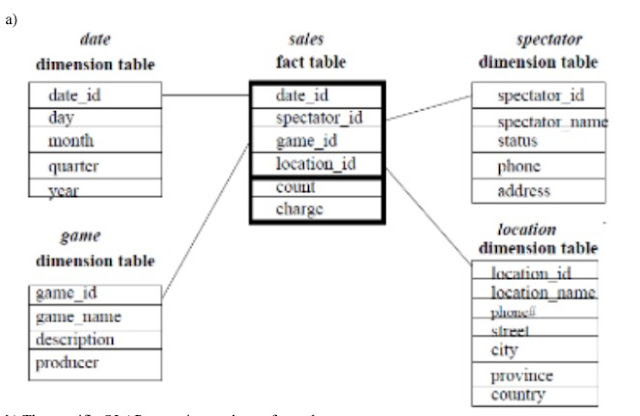Explain relational database with it's example.
RELATIONAL DATABASES
A relational database is a form of database that stores and allows access to data elements that are connected. Relational databases are based on the relational model, which is an easy-to-understand method of expressing data in tables. In a relational database, each row in the table is a record with a unique ID called the key. The columns of the table carry data attributes, and each record generally includes a value for each attribute, making it simple to construct links between data points.
In a relational database, each table, also known as a relation, includes one or more data categories in columns, also known as attributes. Each row, also known as a record or tuple, includes a unique instance of data, or key, for the columns' stated categories. Each table has a unique primary key that identifies the data in the table. The relationship between tables may then be defined using foreign keys, which are fields in one table that are linked to the primary key of another table.
A normal business order entry database, for example, might have a table that identifies a client, with columns for name, address, phone number, and so on. Another table would explain an order: the product, the client, the date, the sales price, and so on. A user of a relational database can then acquire a view of the database that is tailored to their requirements. A branch office manager, for example, would want a view or report on all clients who purchased items after a given date. A financial services manager in the same organization may acquire a report on accounts that needed to be paid using the same tables.
A Relational Database Example
Here is a simple example of two tables that a small firm may use to process product orders. The first table is a customer information table, which means that each entry contains a customer's name, address, shipping and payment information, phone number, and other contact information. Each piece of information (each attribute) is in its column, and each row is assigned a unique ID (a key) in the database. Each entry in the second table-a customer order table-includes the ID of the customer who made the purchase, the product ordered, the quantity, the size, and color are chosen, and so on-but not the client's name or contact information.
The only thing these two tables have in common is the ID column (the key). However, because of the shared field, the relational database may establish a link between the two tables. When the company's order processing application submits an order to the database, the database can go to the customer order table, pull the correct product order information, and use the customer ID from that table to look up the customer's billing and shipping information in the customer info table. The database system can then fetch the proper product, the client will receive the order on schedule, and the firm will be compensated.
.png)



Comments
Post a Comment